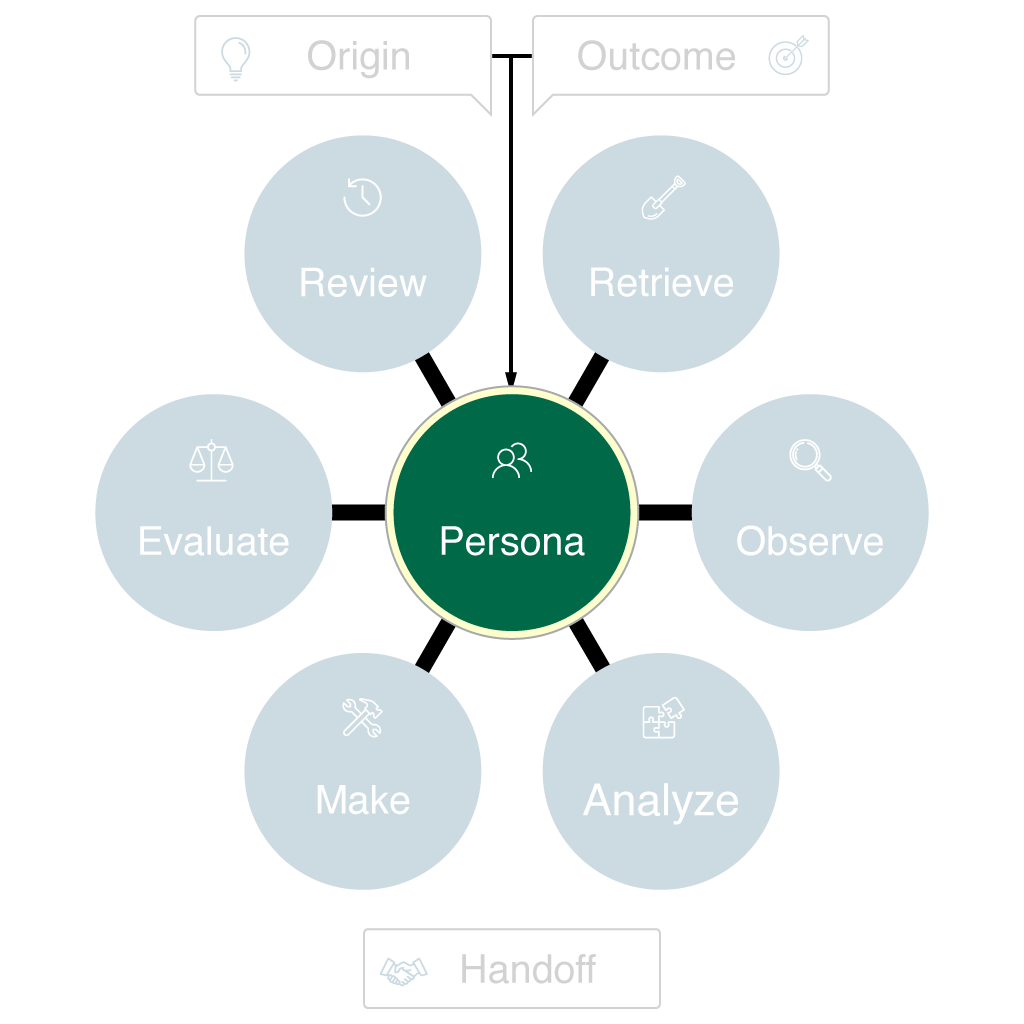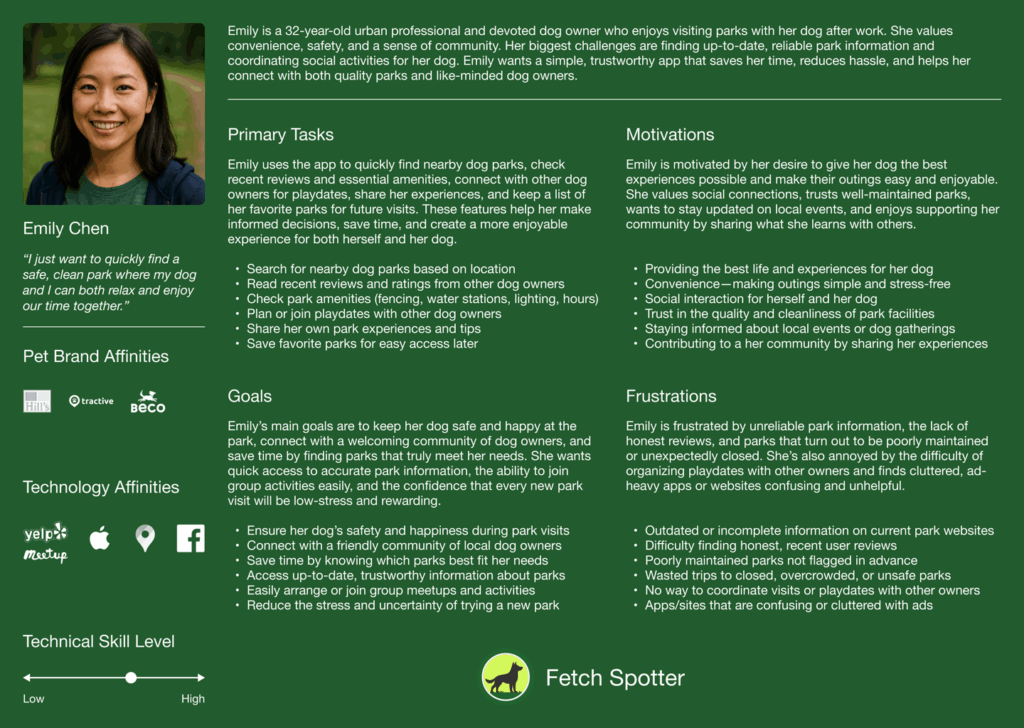
The Persona phase defines who will benefit from the work and clarifies their goals, needs, and challenges. This phase is about more than building user stories—it’s about ensuring that every team, function, and stakeholder group develops a common, human-centered understanding of who truly matters and why. A well-defined persona provides a “north star” for collaboration, decision-making, and alignment, rooting the solution in real user requirements—not assumptions.
Purpose
- Identify the primary and secondary personas who will be affected—across teams, roles, and external partners if applicable.
- Clarify the needs, motivations, and pain points of those personas, ensuring input from all relevant groups.
- Create shared understanding so every objective, design, and solution is anchored to real beneficiaries—not just internal or assumed priorities.
- Use persona work to break down silos and promote empathy across teams, reducing bias and rework.
Key Questions
- Who is the primary persona for this work? Who truly benefits, and who may be overlooked?
- Are there secondary personas, edge cases, or influential stakeholders we should consider?
- What are the key goals, needs, and pain points of these personas? Are these validated with real data and feedback?
- How does this work fit into their daily lives, tasks, or broader objectives—across user and business contexts?
- What feedback, research, or insights do we already have about these personas? Are there knowledge gaps?
- What are the risks if persona needs are misunderstood or ignored—especially for stakeholder alignment or user adoption?
- How will we keep persona needs central throughout the project, and ensure every team maintains empathy and focus?
Read the research report on understanding user needs. [Document Link – PDF]
Case Study Example: Dog Park Finder App (Fetch Spotter)
Applying the Persona Phase:
Who is the primary persona for this work?
- Primary:
- Emily
- 32-year-old urban dog owner
- Frequently visits parks after work
- Wants safe, clean places for her dog to socialize.
Are there secondary personas we should consider?
- Retirees with dogs who visit parks in off-peak hours
- Families with children and dogs
- City park officials managing maintenance and events
What are the key goals, needs, and pain points of these personas?
- Find safe, well-maintained parks quickly
- Share and read honest reviews and up-to-date park information
- Connect with other dog owners and avoid crowded or unsafe times
How does this work fit into their daily tasks or broader objectives?
- Streamlines evening routines by making park selection fast and reliable
- Helps plan dog playdates or avoid busy periods
- Supports city officials’ goal to promote park usage and address complaints proactively
What feedback or insights do we already have about these personas?
- User research shows dog owners rely on word-of-mouth or scattered websites
- Existing feedback highlights frustration with incomplete or outdated park info
What are the risks if persona needs are misunderstood or ignored?
- Poor app retention due to lack of trust or relevance
- City partners disengage if their workflows or data aren’t supported
How will we keep persona needs central throughout the project?
- Reference persona profiles in design and feature planning
- Ongoing user interviews and surveys at key milestones

Figure: A sample persona for the Dog Park Finder App

